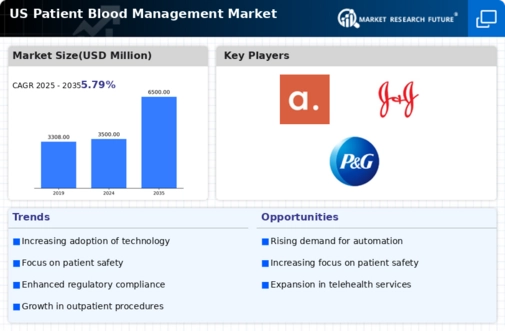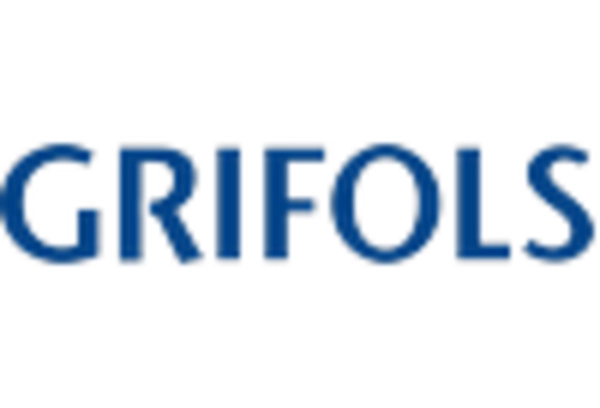Increasing Demand for Blood Products
The rising demand for blood products in the healthcare sector is a crucial driver for the patient blood-management market. As the population ages and the prevalence of chronic diseases increases, the need for blood transfusions and related products is expected to grow. In the US, the American Red Cross reports that every 2 seconds, someone needs blood, highlighting the ongoing necessity for blood management solutions. This demand is projected to increase by approximately 5% annually, prompting healthcare facilities to adopt more efficient blood management practices. Consequently, hospitals and clinics are investing in advanced blood management systems to ensure the availability and safety of blood products, thereby driving growth in the patient blood-management market.
Technological Integration in Healthcare
The integration of advanced technologies in healthcare is transforming the patient blood-management market. Innovations such as electronic health records (EHRs), artificial intelligence (AI), and data analytics are enhancing blood management processes. For instance, AI-driven algorithms can predict blood demand more accurately, reducing waste and ensuring optimal inventory levels. The market for blood management software is expected to grow by over 10% annually, driven by the need for efficient data management and real-time tracking of blood products. This technological evolution not only streamlines operations but also improves patient outcomes, making it a significant driver for the patient blood-management market.
Regulatory and Accreditation Requirements
Regulatory and accreditation requirements play a pivotal role in shaping the patient blood-management market. Organizations such as the Food and Drug Administration (FDA) and the American Association of Blood Banks (AABB) set stringent standards for blood collection, storage, and transfusion practices. Compliance with these regulations is essential for healthcare facilities, driving them to invest in robust blood management systems. The need for accreditation by bodies like the Joint Commission further emphasizes the importance of adhering to best practices in blood management. As facilities strive to meet these requirements, the patient blood-management market is expected to expand, reflecting the ongoing commitment to quality and safety in blood transfusion practices.
Focus on Patient Safety and Quality of Care
Patient safety remains a top priority in healthcare, significantly influencing the patient blood-management market. The emphasis on reducing transfusion-related complications and improving patient outcomes has led to the implementation of stringent protocols and guidelines. According to the Joint Commission, hospitals are increasingly adopting evidence-based practices to enhance blood safety, which may reduce transfusion reactions by up to 30%. This focus on quality care encourages healthcare providers to invest in comprehensive blood management systems that monitor and optimize blood usage. As a result, the patient blood-management market is likely to experience growth as institutions prioritize patient safety and strive to meet regulatory standards.
Rising Awareness of Blood Conservation Strategies
There is a growing awareness of blood conservation strategies among healthcare providers, which is positively impacting the patient blood-management market. Techniques such as preoperative autologous blood donation and intraoperative blood salvage are gaining traction as they minimize the need for allogeneic blood transfusions. Studies indicate that implementing these strategies can reduce transfusion rates by up to 40%, thereby enhancing patient safety and reducing costs. As hospitals and surgical centers increasingly adopt these practices, the demand for blood management solutions that support conservation efforts is likely to rise, further propelling the patient blood-management market.

















Leave a Comment